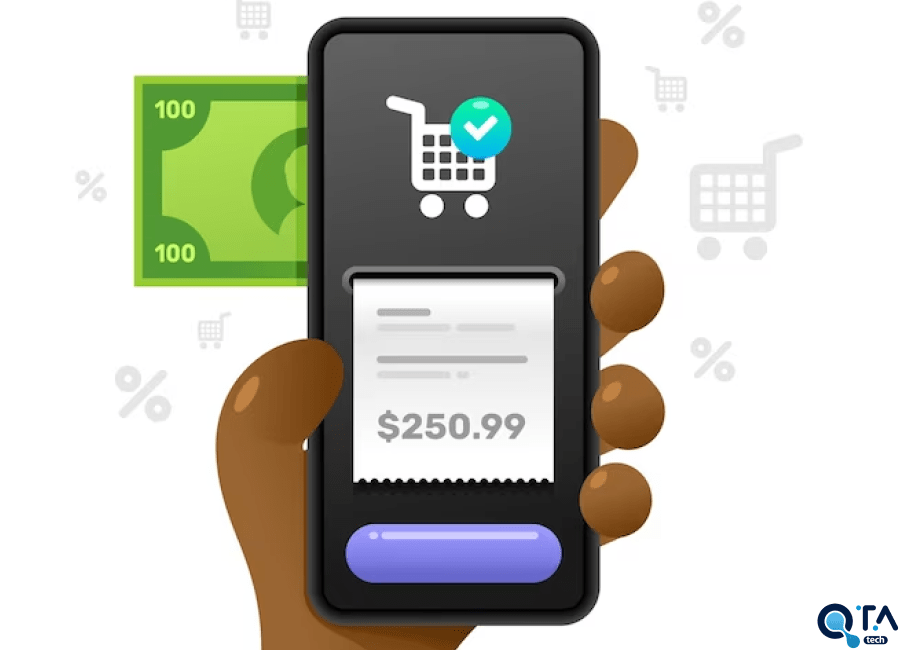Mobile Payment in Africa: A Step-by-Step Guide to Creating a Custom Payment Method for Drupal Commerce
Mobile payment solutions have revolutionized the way people in Africa conduct financial transactions. With the increasing popularity of mobile wallets and digital payment platforms, it's crucial for businesses to integrate these methods into their e-commerce systems. By creating a custom payment method for Drupal Commerce, businesses can tap into the growing mobile payment market in Africa and provide their customers with a convenient and secure way to make purchases. This step-by-step guide offers valuable insights and practical tips for businesses looking to implement mobile payment solutions in their e-commerce systems. With the right approach and tools, businesses can leverage the power of mobile payments to drive growth and success in the African market.
Why Mobile Payment in Africa?
Africa has experienced a significant surge in mobile phone usage, surpassing traditional banking infrastructure in many regions. Mobile payment solutions, such as M-Pesa, MTN Mobile Money, and Orange Money, have gained widespread adoption, allowing users to send and receive payments conveniently from their mobile devices.
Integrating mobile payment options into your Drupal Commerce website opens up new opportunities to tap into the African market, reach a wider audience, and provide a seamless payment experience for your customers.
Step 1: Research Mobile Payment Providers
The first step is to research and identify the mobile payment providers that are popular in your target African markets. Some key providers to consider include:
- M-Pesa: A widely used mobile money platform in East Africa, operated by Safaricom.
- MTN Mobile Money: Popular in many countries across Africa, including Cameroon, Ghana, Uganda, and Côte d'Ivoire.
- Orange Money: A mobile payment service available in several African countries, including Senegal, Mali, and Cameroon.
Each provider may have its own API and integration requirements, so it's essential to thoroughly understand their documentation and developer resources.
Step 2: Create a Custom Payment Module
In Drupal Commerce, you can create custom payment modules to integrate with external payment gateways. Here's an example of how you can create a custom payment module for integrating a mobile payment provider:
- Create a new directory for your custom module. For example, `custom_payment`.
- Inside the `custom_payment` directory, create the following files:
- `custom_payment.info.yml`: Add module metadata and dependencies.
- `custom_payment.module`: Implement the necessary hooks and logic for the payment integration.
- In the `custom_payment.module` file, implement the following hooks:
/**
* Implements hook_help().
*/
function custom_payment_help($route_name, RouteMatchInterface $route_match) {
switch ($route_name) {
case 'help.page.custom_payment':
return '<p>' . t('Instructions for setting up the custom payment module.') . '</p>';
}
}
/**
* Implements hook_commerce_payment_gateway_info().
*/
function custom_payment_commerce_payment_gateway_info() {
return [
'custom_payment_gateway' => [
'title' => t('Custom Payment'),
'description' => t('Custom payment integration for mobile payment provider.'),
'plugin' => 'CustomPaymentGateway',
],
];
}
/**
* Implements hook_commerce_payment_method_info().
*/
function custom_payment_commerce_payment_method_info() {
return [
'custom_payment_method' => [
'title' => t('Custom Payment Method'),
'base' => 'commerce_payment_method',
'description' => t('Custom payment method for mobile payment provider.'),
'plugin' => 'CustomPaymentMethod',
],
];
}- Implement the payment gateway and payment method classes. These classes handle the integration with the mobile payment provider's API and provide the necessary methods for processing payments. Here's an example of how the classes can be structured:
use Drupal\commerce_payment\Entity\PaymentGatewayInterface;
use Drupal\commerce_payment\Plugin\Commerce\PaymentGateway\SupportsAuthorizationsInterface;
use Drupal\commerce_payment\Plugin\Commerce\PaymentMethod\PaymentMethodBase;
use Drupal\commerce_payment\PaymentMethodInterface;
use Symfony\Component\DependencyInjection\ContainerInterface;
/**
* Provides the Custom Payment gateway.
*
* @CommercePaymentGateway(
* id = "custom_payment_gateway",
* label = @Translation("Custom Payment"),
* display_label = @Translation("Custom Payment"),
* forms = {
* "add-payment-method" = "Drupal\custom_payment\PluginForm\CustomPaymentMethodAddForm",
* },
* payment_method_types = {"custom_payment_method"},
* )
*/
class CustomPaymentGateway extends PaymentGatewayBase implements SupportsAuthorizationsInterface {
// Implementation details for the custom payment gateway.
}
/**
* Provides the Custom Payment payment method.
*
* @CommercePaymentMethod(
* id = "custom_payment_method",
* label = @Translation("Custom Payment Method"),
* payment_gateway = "custom_payment_gateway",
* )
*/
class CustomPaymentMethod extends PaymentMethodBase implements PaymentMethodInterface {
// Implementation details for the custom payment method.
}- Customize the classes according to the mobile payment provider's API requirements, including methods for authorizing payments, capturing funds, and handling callbacks.
Step 3: Configure and Test the Custom Payment Method
Once you have created the custom payment module, follow these steps to configure and test the custom payment method in Drupal Commerce:
- Enable the `custom_payment` module in your Drupal site's admin interface.
- Navigate to the Payment Gateways administration page (`/admin/commerce/config/payment-gateways`) and click "Add payment gateway." Select the "Custom Payment" option.
- Configure the custom payment gateways settings, such as API credentials and endpoint URLs, based on the mobile payment provider's documentation.
- Save the configuration and navigate to the Payment methods administration page (`/admin/commerce/config/payment-methods`). Click "Add payment method" and select the "Custom Payment Method" option.
- Configure the custom payment method settings, such as specifying the supported currencies and any additional requirements from the mobile payment provider.
- Save the configuration and conduct test transactions using the custom payment method to ensure it integrates correctly with the mobile payment provider's API.
Conclusion
Integrating mobile payment methods into your Drupal Commerce website opens up new possibilities for reaching African customers and providing them with a seamless payment experience. By following this step-by-step guide, you can create a custom payment method tailored to the mobile payment provider of your choice, allowing your business to tap into the growing mobile payment landscape in Africa.
Remember to thoroughly understand the API documentation and requirements of the mobile payment provider you choose to integrate with. Regularly test and monitor your payment integration to ensure it remains functional and secure, providing a smooth payment experience for your African customers.
Note that we provide Drupal e-commerce services, you can get a free quote here.
